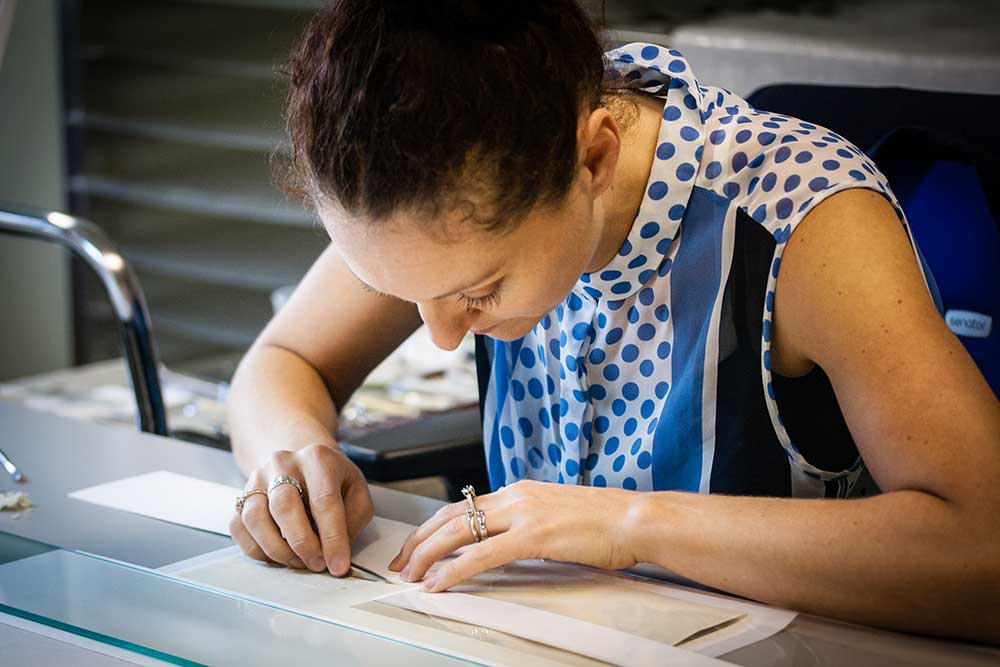Shakespeare’s will is currently on display as part of our exhibition By Me William Shakespeare. In preparation for the exhibition, we took a fresh look at the will from historic, scientific and conservation points of view, and reviewed its appearance.
The conservation team had to make a difficult decision: should we carry out renewed conservation treatment of the will or not? Should we accept and manage the inherent risks of such a treatment, or reduce the chances of ever fully understanding and interpreting the will’s material features – its paper, watermarks and ink?
We decided to conserve the will.

Conservation Manager Nicola Fleming
The document had been repaired in the past with a heavy paper that covered the back and the front edges of each of the three pages. This method of repair left the document looking very different to how it would in its original state. It flattened out all creases and disguised the damaged edges, giving the will an unnatural appearance. The heavy repairs also covered the back of each page, concealing potentially vital information. Full technical examination, and therefore historic interpretation, could not be carried out.
Conservators carry out technical examination and methods of scientific analysis in order to obtain more information about the materials used to create a document and to assess its current condition. We work closely with archivists and scientists to determine how this information can be used to enhance our historical understanding of the record.
In this case we hoped to reveal a number of technical characteristics: examination and analysis of Shakespeare’s will may shed light on how it was created and stored. By looking at the folding patterns, the damage and surface dirt present on each page, we wanted to understand how the document was stored at various stages of its life. Each page contains a watermark; we knew we would be able to see the marks more clearly if we removed the backing. Watermarks can be used to determine the origin of a paper. They can also be used along with other characteristics of the paper sheets to tell if each page is the same type of paper.
Ink analysis can also provide crucial information: we wanted to find out whether the ink is the same on each folio. There are areas of the text that have been crossed out and additional text added in between lines. We carried out an investigation into whether these inks differ from the main body of text. The results of this analysis may allow us to piece together the timeline of the creation of the will.
Despite the substantial gain in historical understanding, our decision to conserve the will was not straightforward. Any such action carries associated risks, and in this case the document itself was extremely fragile and at risk of losing fragments. In addition the document showed signs of iron gall ink corrosion, which could potentially be enhanced as a result of a conservation treatment. To minimise these risks, substantial treatment testing was carried out on artificially aged samples. The testing allowed us to compile a treatment proposal that mitigated all risks as much as possible.
You can explore the conservation of Shakespeare’s will through short films we made during the treatment:
Related blogs
Shakespeare’s daughters and female inheritance
Curation, collaboration and location: tracing Shakespeare through London
[…] Restaurarea testamentului lui Vasile Aruncatorul-de-suliță. […]
[…] into the will and how it was created. From this main page there are additional pages, such as this one on how they have approached conserving the will, and this one by Amanda Bevan, the National Archives’ head of legal records. She has come to the […]